Fermented Cabbage in the Amour Style by yusuke goto
Mar 27,2025
Fermented Cabbage in the Amour Style by yusuke goto
Mar 27,2025
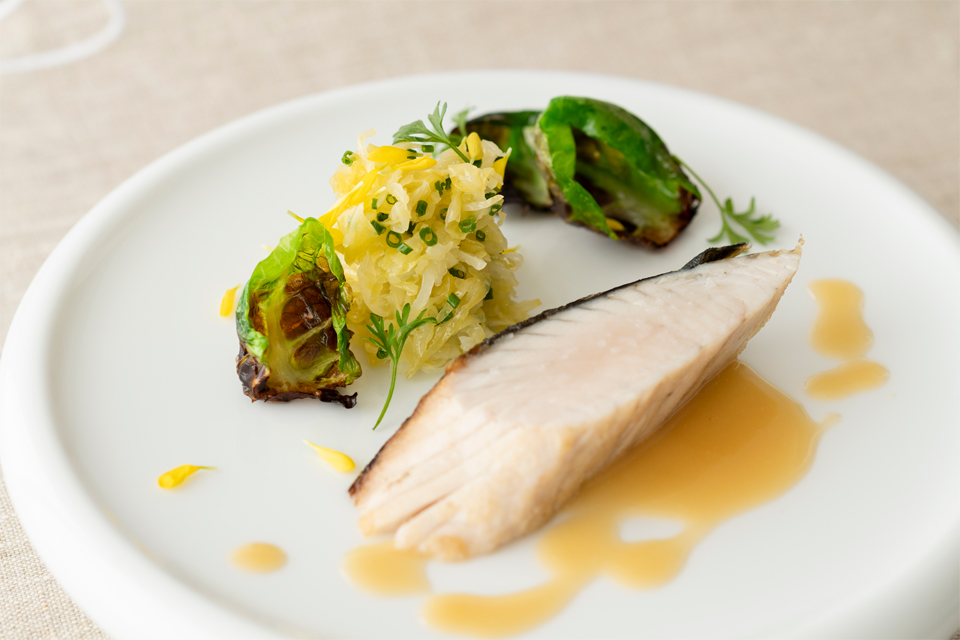

“Fresh, tender spring vegetables are typically easy to ferment and taste better for it. And temperature-wise, spring is a good season for fermenting.” So says Goto Yusuke, executive chef of celebrated French restaurant Amour in the Ebisu district of Tokyo, which the Michelin Guide Tokyo awarded a star for seven straight years.
One of the foods served at the restaurant is lactic acid bacteria-rich fermented cabbage. Here Chef Goto shares his recipe for making it in your own kitchen. What he has to say about eating natto (fermented soybeans) and yogurt to stay healthy is also a must-read. After all, he’s a chef, and physical fitness is one of his biggest assets.
Chef Goto started serving fermented vegetables at his restaurant six years ago. A major inspiration for doing so was the renowned Danish restaurant Noma, which has become a global sensation by topping the World’s 50 Best Restaurants list five times. Noma triggered the global fermentation boom by setting up a fermentation lab on the premises to research and develop its own fermented foods. These are incorporated into everything it serves.
“Back then, more and more restaurants in both Japan and France incorporated fermented foods into French dishes under Noma’s influence. That was a little while ago, but fermented foods weren’t just a passing fad; they’ve become standard on the menu. At Amour, we lacto-ferment and serve a wide variety of vegetables, including onions, tomatoes, and mushrooms.”
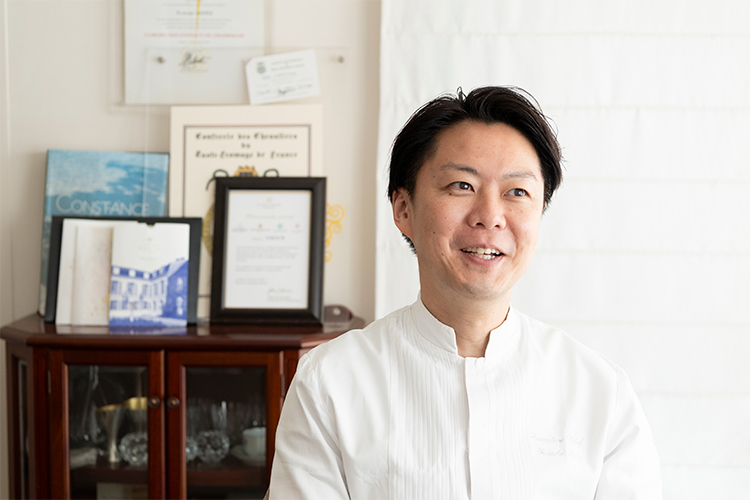
Of the fermented vegetables served at Amour, Chef Goto particularly recommends the fermented cabbage for making at home. While recipes for lacto-fermenting cabbage are legion — German sauerkraut, French choucroute, and so forth — Chef Goto believes that fermented cabbage should above all taste fresh.
“I pickle the cabbage in salt equal to 0.8 percent of its weight. That makes it just salty enough, with a mild, refreshing taste so it goes well with French cuisine. With 1 percent salt, it has a noticeably salty taste. The greater the salt content, the more it tastes like Japanese pickles.”
The fermented cabbage at the restaurant is served as soon as it’s ready to eat. “It doesn’t keep for long because of the low salt content. You should eat it no more than two days.”
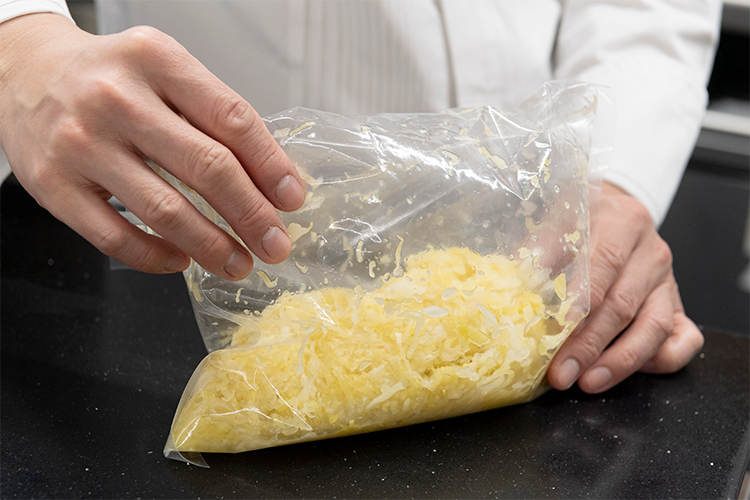
The cabbage served at Amour is fermented in a vacuum using a special piece of equipment. Once it turns yellow and the bag swells up, that means it’s ready to eat.
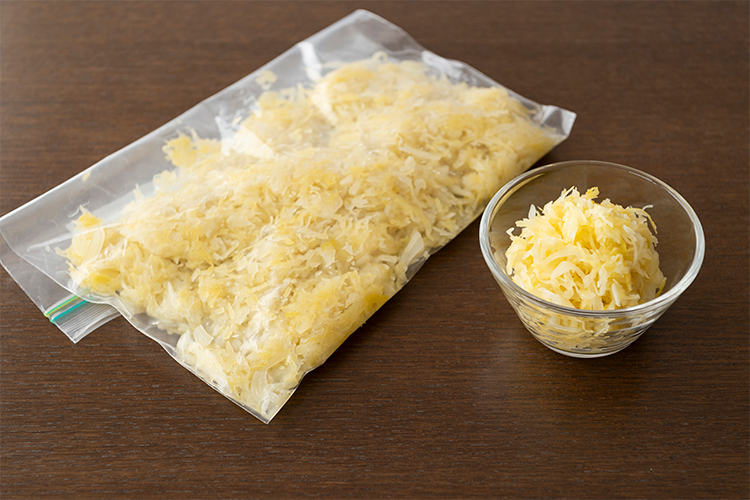
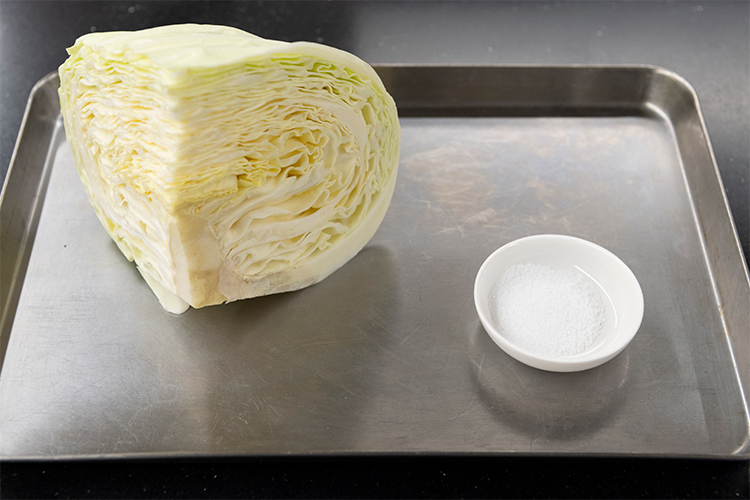
A quarter of a cabbage is recommended so you can eat it all up straight away. “It tastes good enough made with regular cabbage, but it’s even more tender when you use spring cabbage.”
1. Slice the cabbage into thin strips, but not too thin.
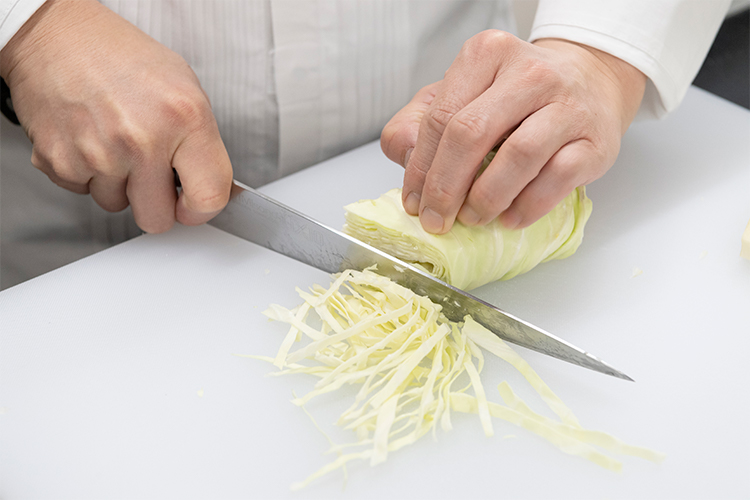
“If you slice it too thinly like shredded cabbage, it’s liable to lose shape at the fermentation stage.”
2. Place in a bowl. Add the salt and mix in with your hand until well coated.

Rather than vigorously massaging the salt in, gently coat the cabbage with it like a dressing.
3. Place in a ziplock bag and squeeze out all the air, then seal.
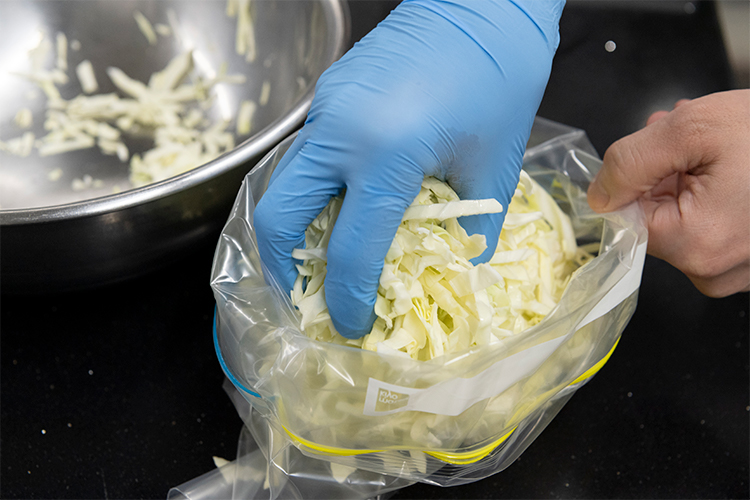
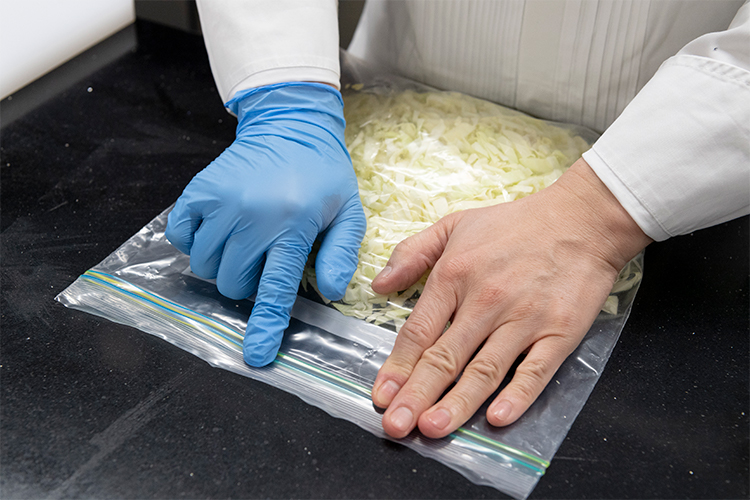
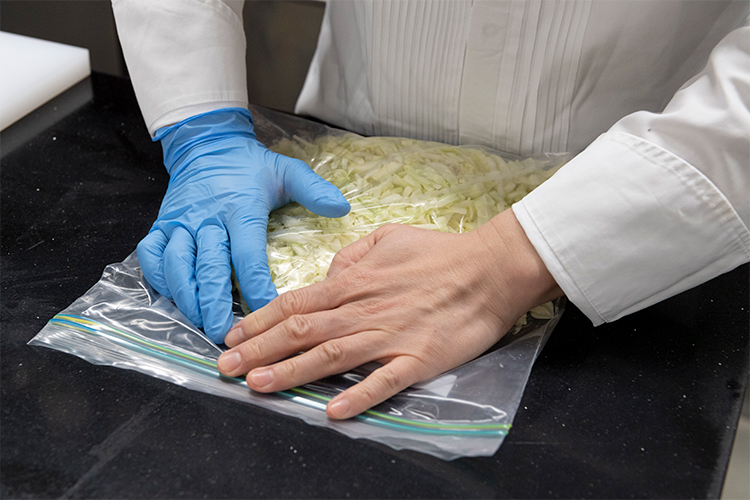

Use a ziplock bag somewhat larger than the amount of cabbage, since it will expand during fermentation. Here’s how to remove all the air. Put the cabbage in the bag (upper left). Squeeze out the air and half-close the zipper (upper right). Squeeze out the air again (lower left). Completely close the zipper (lower right).
4. Store at a room temperature of about 20℃. The cabbage will turn yellow and the bag swell up after about five days (three days in summer), at which point it’s ready to eat. If storing it for longer, transfer to another bag or container and keep in the fridge. Eat up within two days.

Once ready, transfer the fermented cabbage to another bag or container and keep in the fridge so it doesn’t continue fermenting.
With its mildly salty, fresh taste, this fermented cabbage is so good that you can’t put your chopsticks down. So how does Chef Goto serve it at the restaurant?
“I dress it in olive oil after wringing out the moisture. That way it tastes even milder.”
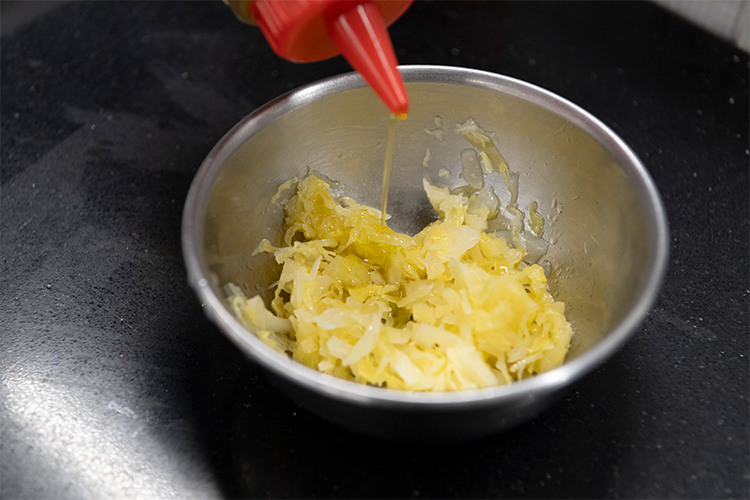
“Fermented cabbage particularly comes into its own when used to garnish fish. Its fresh, mild acidity enhances the delicate flavor of fish without getting in the way. It’s a nice extra touch.”
On the day of our visit, Chef Goto prepared a meal in which cabbage played the starring role alongside Japanese Spanish mackerel. It featured fermented cabbage garnished with herbs, served alongside delicious-smelling Brussels sprout fritters. You thus got to enjoy more than one variety of cabbage. The fresh-tasting fermented cabbage that punctuated the meal highlighted the fine flavor of the sautéed mackerel.
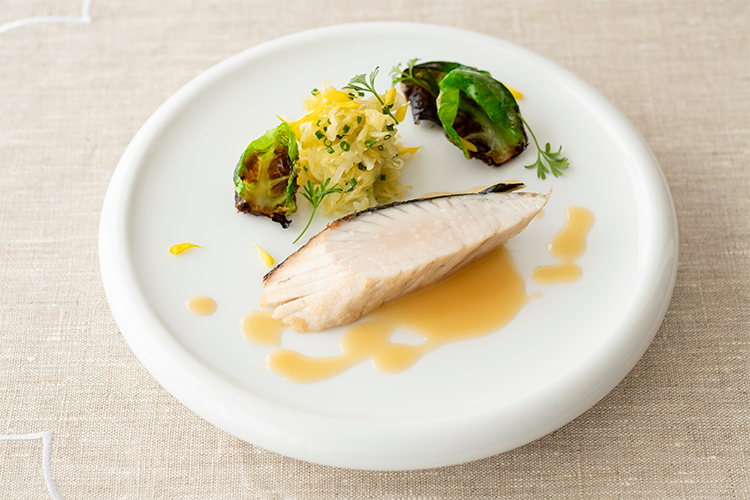
Sautéed Japanese Spanish mackerel in beurre blanc sauce served with fermented cabbage and Brussels sprout fritters. This spring dish delights the eye with its delicate colors and the palate with its refreshing flavor. Beurre blanc sauce is a butter sauce that pairs beautifully with fish.
Chef Goto eats on the job all the time, sampling food before it’s served to guests and trying new menu items while they’re still under development. He often has a drink as well. He’s therefore extra careful about his health: his physical condition, his energy intake, getting a balanced diet.
What’s his secret to staying in top form when he’s constantly busy?
“Eating natto and yogurt at the same time virtually every day.”

The two products Chef Goto eats routinely: Okame Natto S-903 (right); and Hokkaido Zero Fat Plain Yogurt (left), sold under the Smile Life brand, the private label of Japanese supermarket chain Life.
He eats it after work at one or two in the morning.
“First I eat the natto; then after having a few snacks with a drink — and there’s nothing I love more than a drink — I finish up with some low-fat yogurt. I almost never get colds anymore thanks to this routine. It also keeps my stomach in good condition. When you have an upset stomach, nothing you sample tastes good, and that’s fatal for a chef. I now appreciate the benefits and importance of eating fermented foods more than ever.”
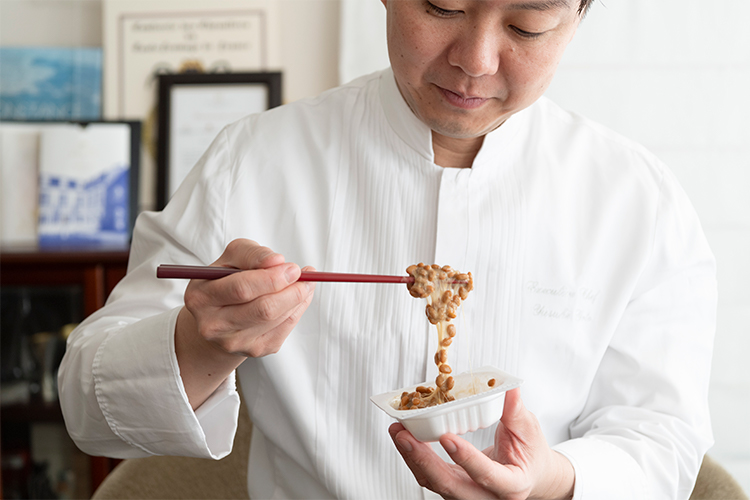
He downs a single container of natto after thoroughly mixing in the accompanying sauce. “This snack is a source of lactic acid bacteria — from the sauce — as well as natto bacilli.”
“The natto and yogurt I eat are so ordinary that I can pick them up at the late-night supermarket if I ever run out,” says Chef Goto. “Once I’ve decided to eat a particular variety of something, I insist on sticking to it.” In addition, he goes to the gym before work three or four times a week, and he’s in the habit of eating a boiled egg at lunchtime — the nutritionally perfect food.
“I guess you could say it’s like feeding my body the same bacteria all the time so they’re permanently in my system. For me, natto and yogurt are like medications. They keep me in good working condition.”
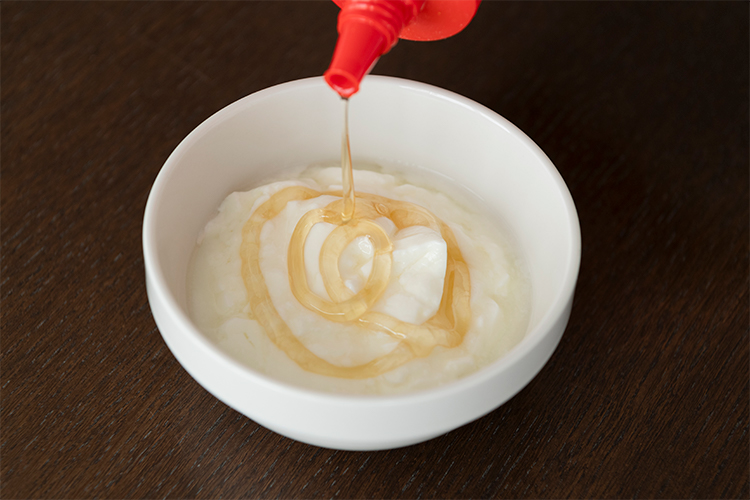
Chef Goto eats a generous half containerful (approx. 200 g) of yogurt drizzled with honey. “I’ve got a sweet tooth, but I try not to overindulge it. I just finish the day with something sweet.”

Executive Chef, Amour
Executive Chef, Amour
Goto Yusuke is executive chef of Amour, a French restaurant in Tokyo’s Ebisu district awarded a star by the Michelin Guide Tokyo, Yokohama, Shonan for seven years running from 2013. He studied at the Tsuji Group French Culinary Institute before going on to the Tsujicho Group France School in Lyon, France. After graduating, he honed his skills at Au Crocodile (which then had three stars) in Strasbourg. On returning to Japan, he trained at Ginza L’écrin, then went back to France, where he further trained at several starred restaurant. He opened Amour in 2012. Chef Goto also shares home cooking ideas, and his friendly, approachable personality makes him a frequent presence on television. Plus he has his own YouTube channel, Goto Channel. He is the author of Everyday French Food: Lessons from One-star Restaurant Amour (published by Shufu no Tomo Sha).
Amour: https://www.amourtokyojapan.com/